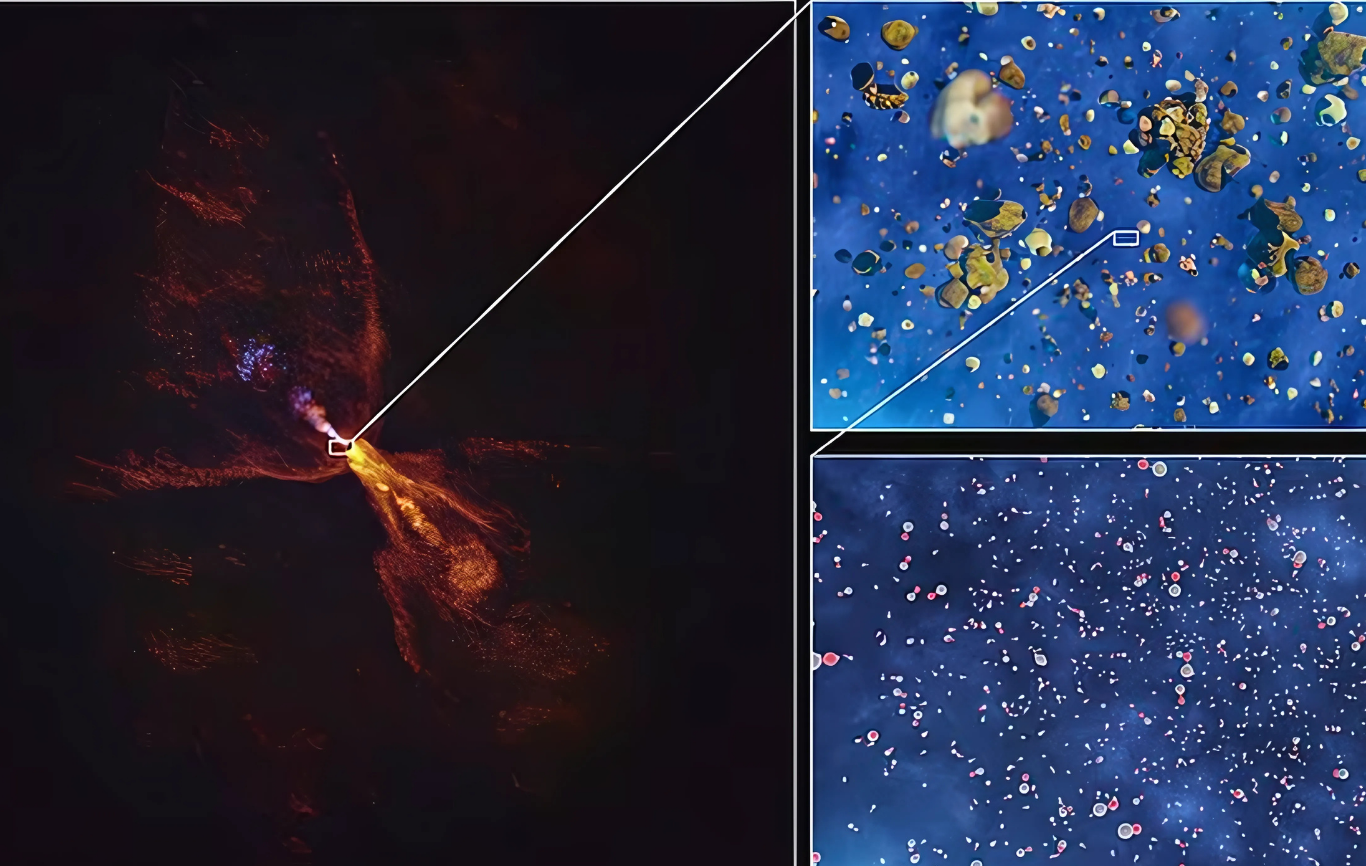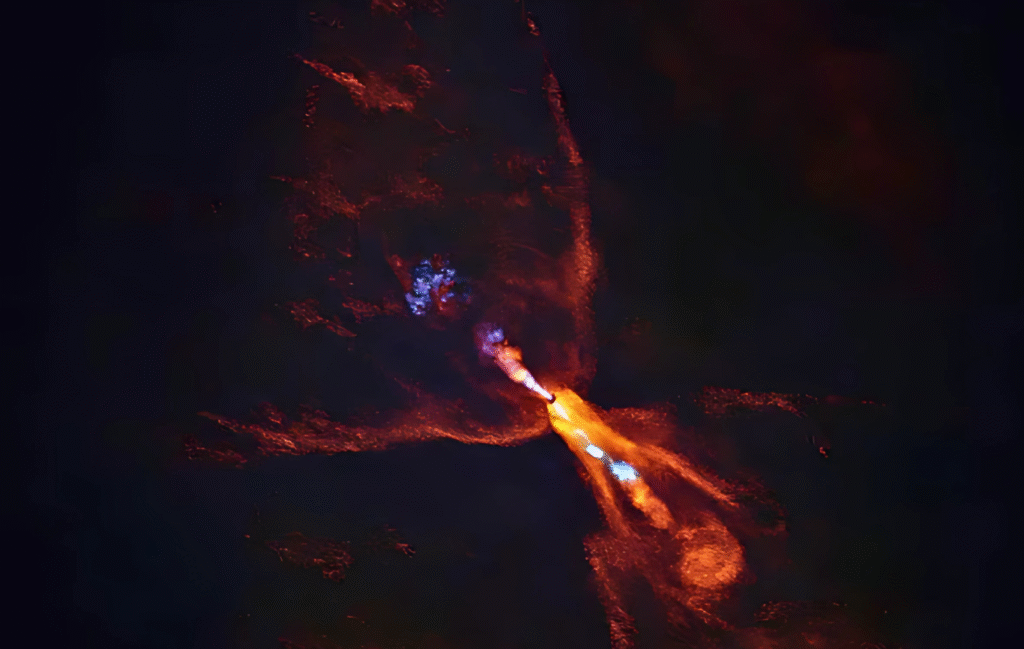
Stunning Breakthrough: Scientists Capture the Exact Moment Planets Begin to Form Around a Distant Star
The Birth of a Solar System Unveiled 1,300 Light-Years Away
In a monumental scientific achievement, astronomers have, for the first time, captured the exact moment of planet formation around a distant star. This rare glimpse into the early stages of a solar system comes from observations of HOPS-315, a protostar located roughly 1,300 light-years away in the constellation Orion.
Using cutting-edge technology, including the James Webb Space Telescope (JWST) and the Atacama Large Millimeter/submillimeter Array (ALMA) in Chile, researchers have observed the conditions that mark the origin of planets, offering critical insights into how planetary systems like our own form and evolve.
HOPS-315: A Baby Star with Big Revelations
HOPS-315 is known as a protostar—an early-stage star that is just starting its development into a fully formed star. What makes HOPS-315 exceptional is that it’s surrounded by a hot ring of minerals—a protoplanetary disc—where new planets are beginning to emerge.
Lead researcher Professor Melissa McClure, an astronomer at Leiden University, explained that the properties of this star are remarkably similar to what scientists believe our own Sun looked like when it was just 100,000 years old. “It provides a snapshot of what the Sun might have looked like in its infancy,” she noted.
Protoplanetary Discs: The Cradle of Planets
Planets are born from protoplanetary discs—flattened, rotating structures of gas and dust that encircle young stars. As time passes, particles in these discs collide and bond, gradually forming planetesimals—the small bodies that serve as the foundation for planet formation.
While astronomers have long observed these discs and even young planets forming within them, capturing the precise moment that planet formation begins has remained elusive—until now.
Silicon Monoxide: The Signature of New Worlds
The breakthrough came when JWST detected silicon monoxide gas near HOPS-315. This chemical is a key marker for planetary birth because it only condenses under extreme heat, the kind found in young protoplanetary discs. These high-temperature conditions are essential for the crystallization of minerals, which eventually form planetesimals.
“This is the first time we’ve been able to see these crystalline minerals and silicon monoxide in both gas and solid states around such a young star,” McClure said. “It’s a smoking gun—evidence of the exact moment planets begin to form.”
Pinpointing the Birthplace of Planets
Using ALMA, researchers were able to locate the exact region within the disc where these mineral signals originated. They found that the chemical signatures came from a ring around the protostar, at a distance comparable to the asteroid belt in our solar system.
Dr. Logan Francis, a co-author of the study, remarked, “We’re seeing these minerals in almost the same location in this extrasolar system as we find them in asteroids in our Solar System.”
This spatial similarity strongly suggests that planetary formation around HOPS-315 mirrors the processes that formed Earth and its neighboring planets over 4.5 billion years ago.
Capturing the “t=0” Moment: The Genesis of Planetary Formation
Scientists refer to the earliest moment of planet formation as “t=0”—the point when mineral condensation begins and solid matter starts to coalesce. Capturing this moment has always been a challenge because young stars are typically surrounded by thick clouds of cold gas, obscuring the view.

However, the team studying HOPS-315 found a system with ideal geometry, allowing them to peer through the surrounding gas and capture this once-hidden stage of planetary development.
“This system is one of the best we know for probing the same early processes that took place in our own Solar System,” said Professor Merel van ‘t Hoff of Purdue University. “It’s a rare opportunity to study the very beginning of planetary life.”
Why This Discovery Matters
This unprecedented observation is more than just a scientific milestone—it’s a window into our cosmic origins. By studying systems like HOPS-315, astronomers can better understand:
- How Earth and other planets formed
- The chemical environments necessary for planet formation
- The timeline and mechanics of solar system development
Moreover, this research may help guide future explorations in planetary science, astrochemistry, and even the search for life beyond Earth.
A Leap Forward in Understanding Our Place in the Universe
The discovery of planet formation around HOPS-315 marks a paradigm shift in astrophysics. For the first time, we are not just theorizing or modeling planetary birth—we are watching it happen in real time.
This breakthrough affirms what many in the scientific community have long suspected: that our Solar System is not unique, and the building blocks of life could be forming elsewhere across the universe.
Thanks to powerful new tools like the James Webb Space Telescope and ALMA, we are entering an era where the origins of stars, planets, and potentially life itself are no longer out of reach—they are coming into focus.









